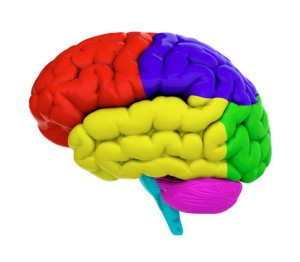
A study published in the journal PLOS Biology could explain why large brains are more vulnerable to brain disorders such as schizophrenia and Alzheimer’s disease.
Mammals exhibit an extensive range of brain sizes, reflecting their adaptation to the varied environments in which they live.
The cerebral cortex in all mammals is the thin layer of gray matter – neural tissue of the brain that is composed of nerve cell bodies and nerve fibers – that covers the brain.
Gray matter is responsible for processing information in the brain, including thoughts, high-level brain functions, such as storing and retrieving memories, calculating, language, and consciousness.
Comparing the cortical networks in the brains of mammals of differing sizes provides data on what features of the brain are preserved through evolution and what processing structures are unique to a particular species.
Zoltán Toroczkai, from the University of Notre-Dame, IN, Mária Ercsey-Ravasz, from Babes-Bolyai University, Romania, and Henry Kennedy, from the University Lyon, France, and colleagues previously combined tracing studies in macaques (which visualize connections in the brain) with network theory. The results showed that macaques’ cortical network is regulated by the exponential distance rule (EDR).
EDR describes a consistent relationship between distances and connection strength. EDR predicts that there are fewer long-range axons than short axons.
Although comparing cortical networks across species can be problematic, the researchers found that by using area tracing data from a macaque, a mammal with a large cortex, and a mouse, which has a significantly smaller cortex, they could introduce a standard model framework that enabled them to make comparisons.
The team used a general organization principle – based on an EDR and cortical geometry – to carry out comparisons within the same model framework.
Regardless of the differing cortex size between species and cortex organization, the researchers noted that all the statistical features of all cortical networks followed EDR.
Long-range connections weaker in primates’ brains than rodents’
In terms of the cortical areas examined by the tracing studies – such as visual cortex or auditory cortex – the closer the two areas were together, the more connections there were between them.
Although the cortical networks in primates and rodents are similar, the long-distance connections in the primates’ brains were considerably weaker.



